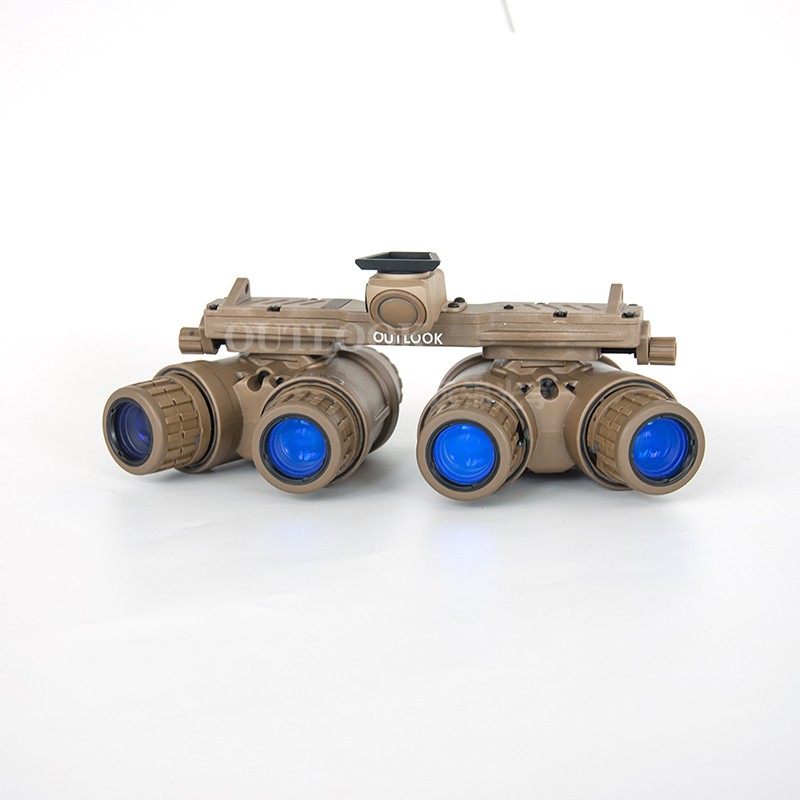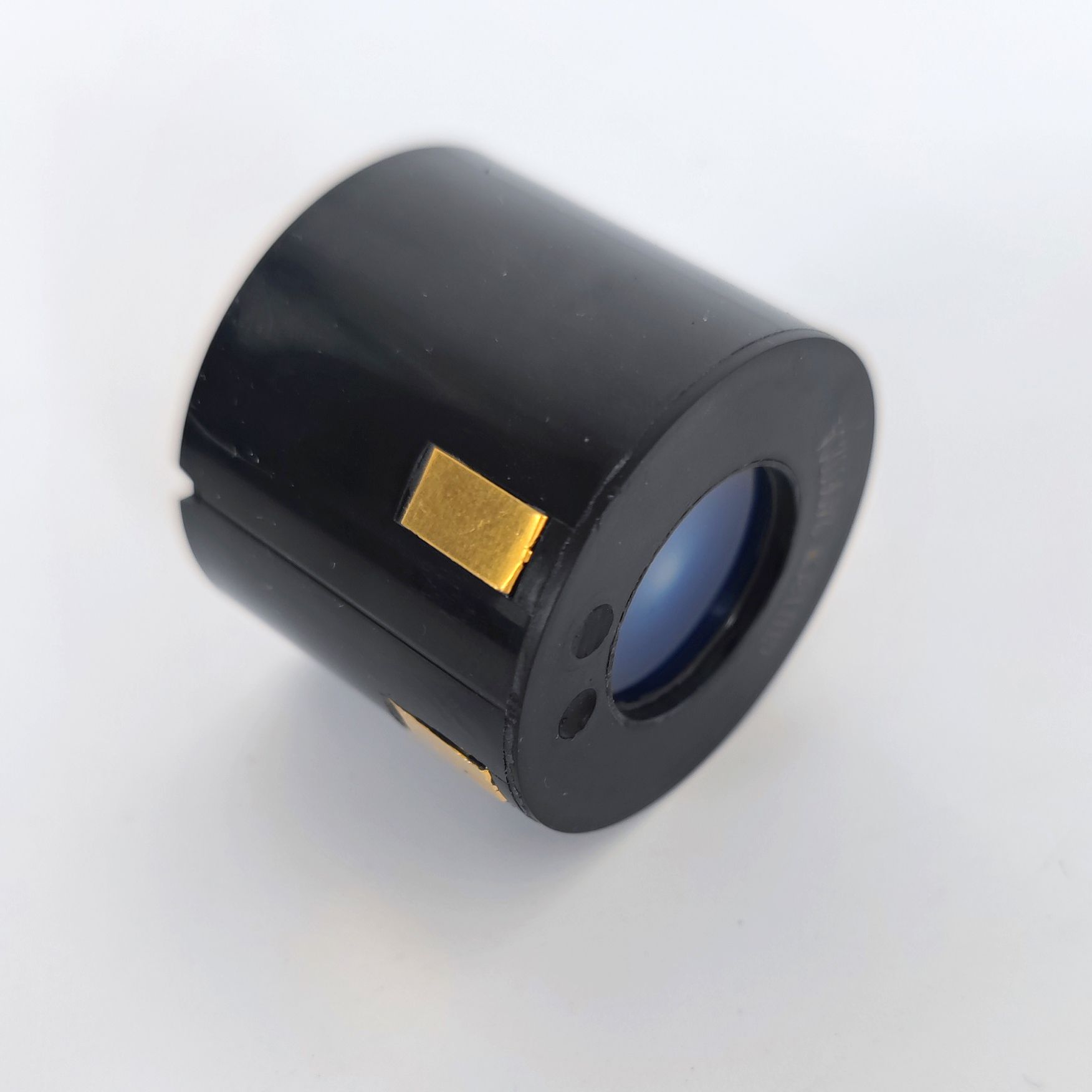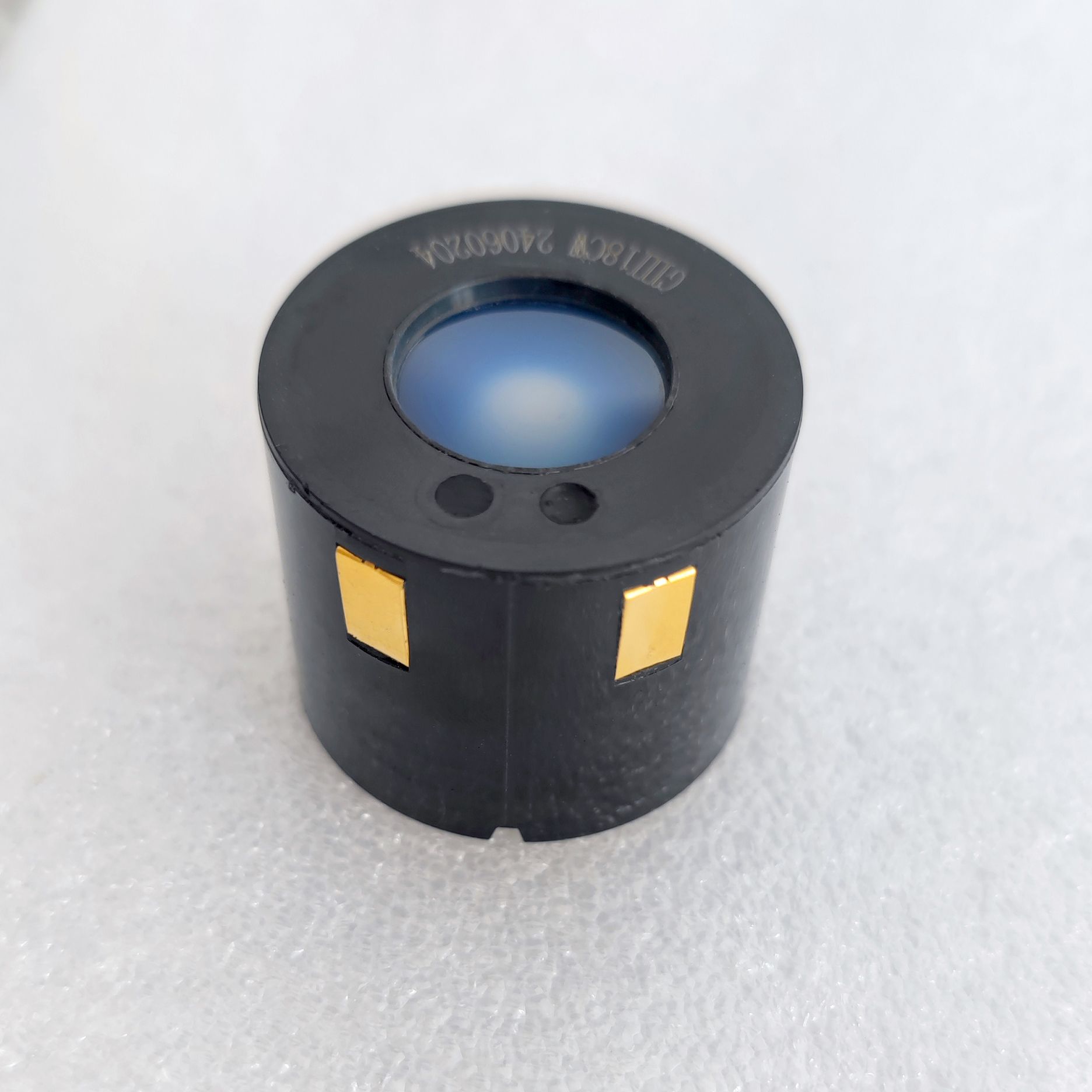Components of Night Vision Devices
1. Objective Lens of Night Vision Devices
Function: ollects weak visible or near-infrared light from the environment and focuses it onto the Image Intensifier Tube.
2. Image Intensifier Tube of Night Vision Devices
Core components, divided into three generations of technology:
Photocathode
Converts incident photons into electrons (photoelectric effect). Mostly made of gallium arsenide (GaAs), the third generation is particularly sensitive.
Microchannel Plate (MCP)
Electron multiplier, composed of millions of microtubes, amplifies electron signals through secondary emission. The third generation MCP has an ion barrier to extend its life.
Phosphor Screen
Electrons bombard phosphor (such as P43) to produce a green visible image, as human vision is most sensitive to green light.
3. Power Supply of Night Vision Devices
4. Eyepiece Lens of Night Vision Devices
Function: Amplifies the image on the phosphor screen for human viewing.
Design: May include diopter adjustment to accommodate different user vision.

Auxiliary Components of Night Vision Devices
IR Illuminator: Actively emits near-infrared light (e.g., 850nm LED) for use in total darkness, but may be detectable by the enemy.
Casing and Protection: Military-grade waterproof and shockproof, with a metal housing to shield against electromagnetic interference.
Technology Generation Differences of Night Vision Devices
Gen 1: Utilizes only a photocathode and electrostatic focusing, requires moonlight assistance, and exhibits significant afterglow.
Gen 2+: Incorporates MCP, achieving a gain of 20,000x and enabling operation even in starlight.
Gen 3/4: Utilizes GaAs photocathode and thin-film MCP, with a lifespan exceeding 10,000 hours and capable of recognizing facial details.
Image Intensifier Tube:
The Image Intensifier Tube is the core component of a night vision device, responsible for converting weak ambient light (such as starlight and moonlight) into a clearly visible image. The working principle of image intensifier tube is to convert light signals into electrons via a photocathode. After amplification by a microchannel plate (MCP), the signals are reconverted into an enhanced optical image on a phosphor screen, enabling observation in low-light environments.
Key Components of an Image Intensifier Tube
1. Photocathode
Responsible for converting incident photons into electrons. Commonly used are the S-20 multialkali photocathode (second generation) and the gallium arsenide (GaAs) negative electron affinity photocathode (third generation), the latter offering higher sensitivity.
2. Microchannel Plate (MCP)
Composed of millions of tiny channels, each channel acts as an electron multiplier, significantly amplifying the electron signal. Smaller channel apertures (e.g., 5μm) result in higher resolution but also greater manufacturing complexity.
3. Phosphor Screen
Converts the electron signals back into visible light. Green or white phosphor is typically used. White phosphor provides higher contrast and a more natural image.
4. Fiber Optic Panel Output Window
Transmits the intensified image. Smaller fiber diameters (e.g., 4μm) result in higher resolution.

Generational Development of Image Intensifier Tubes
First Generation (1960s): Utilized a three-stage cascaded Image Intensifier Tube tube, resulting in large size, low gain, and susceptibility to damage from strong light.
Second Generation (1970s): Introduced the microchannel plate (MCP), resulting in a smaller, lighter, and more resistant to strong light.
Super-Second Generation (2+ Generation): Improved MCP and photocathode yield performance approaching that of the third generation, but at a lower cost.
Third Generation (1980s): Utilized GaAs photocathodes, offering higher sensitivity, but the technology was only available to a few countries.
Fourth Generation (post-2000s): Utilized technologies such as filmless MCPs and automatic gated power supplies, further enhancing low-light imaging capabilities.
Applications and Challenges
Military: Used in individual night vision devices, helmet-mounted sights, and fighter aircraft night vision systems.
Civilian: Used in wildlife observation, firefighting, and industrial inspection. Main Challenge: Susceptible to damage in bright light conditions (for example, staring at a streetlight for two minutes can cause burns on the cathode surface), requiring either automatic protection circuitry or proactive human intervention.
FOM Value: Resolution x Signal-to-Noise Ratio
For example, a FOM of 1000 is the entry-level standard, 1600 and above is considered good, and 2100 and above is considered excellent.
Signal-to-noise ratio is a key parameter for measuring imaging quality, representing the ratio of effective signal (image information) to background noise (random interference). A higher SNR results in clearer, less noise-prone images in low-light conditions, and improved observation quality.
Definition and Importance of SNR
Definition: The signal-to-noise ratio (SNR) is the ratio of the effective signal strength to the noise strength of the Image Intensifier Tube output, typically expressed as a unitless value.
Impact:
Low-light Performance: A higher SNR improves the imaging capability of a night vision device in extremely low light conditions (such as starlight or moonlight), resulting in cleaner and more detailed images.
Note: Due to their low gain, Gen 1 Image Intensifier Tubes may not output a valid signal in extremely low light conditions (e.g., 12.9 μlx), resulting in an unmeasured SNR (N/A) display.

P22, P43, P45, and P46 low-light tubes (phosphors) are primarily used as screens for low-light-level Image Intensifier Tubes. Their key differences lie in their material composition, luminescence properties, and applicable applications.
1. P22 (ZnS:Cu,Al)
Characteristics:
Highest luminous efficiency, suitable for applications requiring high brightness.
Wide spectral range, but moderate resolution.
Application: General-purpose screen for low-light-level Image Intensifier Tubes requiring high brightness.
2. P43 (Gd₂O₂S:Tb)
Characteristics:
Highest resolution, suitable for applications requiring clear images.
Short afterglow, suitable for dynamic observation.
Application: Military night vision devices, high-resolution Image Intensifier Tubes. 3. P45 (Y₂O₂S:Tb)
Features:
Optimal eye comfort and excellent color reproduction.
Moderate luminous efficiency and moderate afterglow time.
Applications: Medical imaging and long-term observation equipment.
4. P46 (Yellow-Green)
Features:
The P46 screen utilizes a special phosphor material.
It has an extremely short afterglow time, making it suitable for high-speed dynamic imaging, effectively reducing image smear and improving temporal resolution.
Summary and Comparison:
P22: Highest luminous efficiency (for high-brightness applications)
P43: Highest resolution (for military and high-precision imaging)
P45: Optimal eye comfort (for medical and long-term observation)
P46: Ultra-short afterglow (for high-speed imaging and neutron detection)
night vision device night vision device

